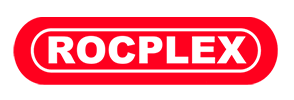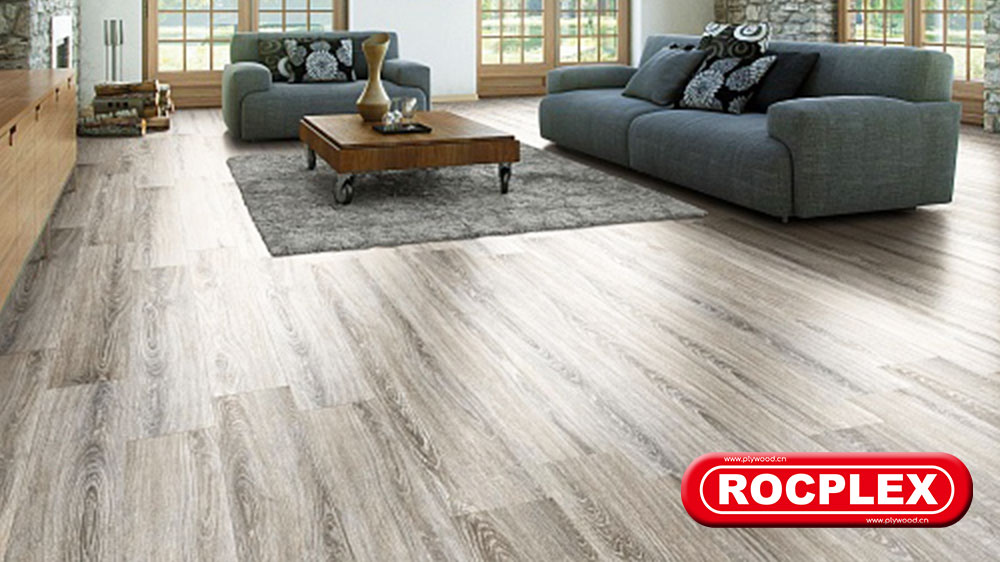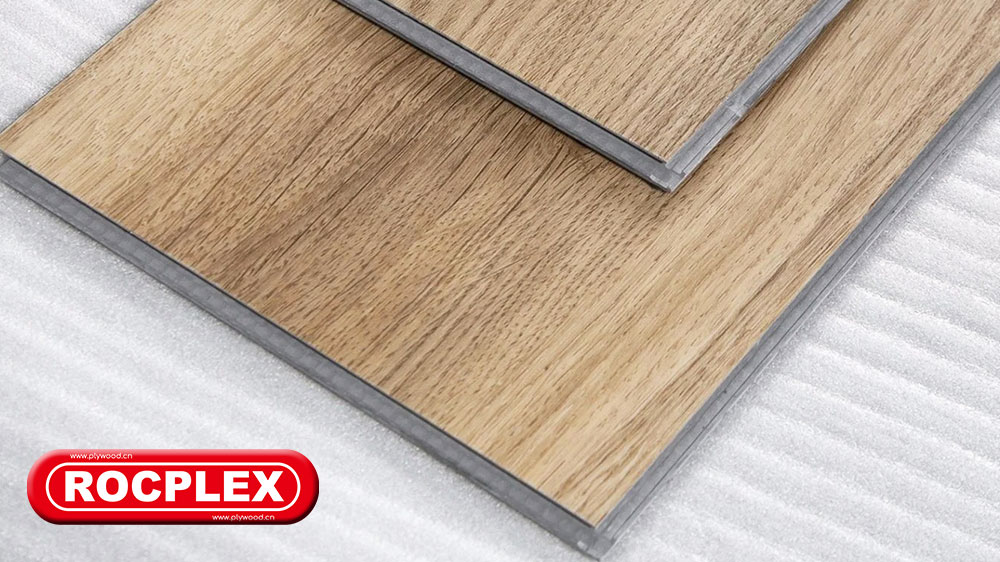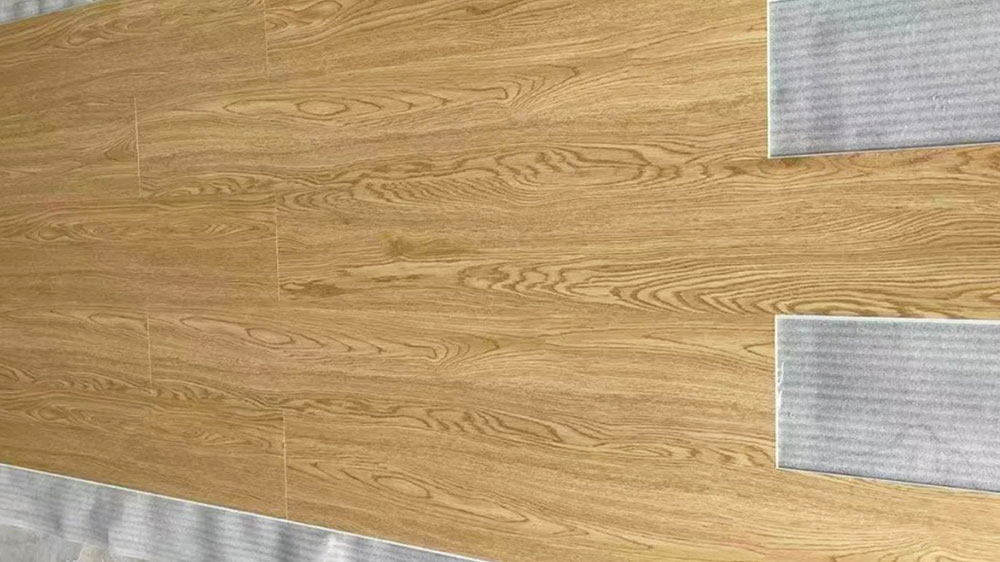What is Vinyl Flooring?
Vinyl flooring, a synthetic material known for its versatility and resilience, has become a popular choice for modern homes. Comprising multiple layers, including a core, design, and wear layer, it is designed to withstand heavy foot traffic and resist moisture. Available in various styles, including vinyl plank and sheet vinyl flooring, it offers an array of design options to suit any interior decor.
Exploring the Benefits of Vinyl Flooring
Durability and Resilience: Vinyl flooring is renowned for its ability to withstand heavy foot traffic, making it an ideal choice for busy households. The wear layer protects against scratches, stains, and fading, ensuring the floor remains beautiful for years.
Water Resistance: One of the standout features of vinyl flooring is its water resistance. This makes it suitable for areas prone to spills and moisture, such as kitchens and bathrooms, where other flooring types might not be practical.
Ease of Maintenance: Keeping vinyl floors clean is a breeze. Regular sweeping and occasional mopping with a mild cleaner are all that’s needed to maintain their appearance.
Comfort and Insulation: Vinyl flooring provides a softer surface underfoot compared to other hard flooring options. It also offers some insulation, contributing to a warmer and more comfortable living space.
The Versatility of Vinyl Plank and Sheet Vinyl Floor
Vinyl floor comes in two main forms: vinyl plank and sheet vinyl. Vinyl plank floor is designed to mimic the look of hardwood floors, providing a cost-effective and low-maintenance alternative. Sheet vinyl, on the other hand, offers a seamless installation, making it ideal for large areas and reducing the risk of water seepage between seams.
Design Options and Aesthetic Appeal
One of the greatest advantages of vinyl flooring is the vast array of design options available. From realistic wood and stone patterns to contemporary geometric designs, there is a vinyl floor to match any interior style. This versatility allows homeowners to achieve their desired aesthetic without compromising on practicality.
Installation and Cost-Effectiveness
Vinyl flooring is not only affordable but also easy to install. Many vinyl plank options feature a click-lock system, allowing for a glueless, floating installation. This DIY-friendly aspect can help reduce overall renovation costs. Additionally, the durability and low maintenance requirements of vinyl floor make it a cost-effective choice in the long run.
Environmental Considerations and Sustainability
While vinyl flooring offers many benefits, it’s important to consider its environmental impact. Many manufacturers are now producing eco-friendly vinyl options that contain recycled materials and are free from harmful phthalates. Choosing a sustainable vinyl floor option can contribute to a healthier home and a greener planet.
Incorporating Vinyl Floor into Your Home
Whether you’re renovating an old space or designing a new home, vinyl flooring can offer a practical and stylish solution. Its durability, ease of maintenance, and wide range of design options make it a suitable choice for any room. From cozy bedrooms to high-traffic living areas, vinyl floor can enhance the aesthetic and functionality of your home.
Choosing the Right Vinyl Floor for Your Space
Selecting the perfect vinyl floor for your home involves considering various factors, including style, durability, and installation options. Here’s a guide to help you make an informed decision:
Style and Design: Vinyl flooring offers a wide range of design options, from wood and stone looks to modern patterns. Consider the overall aesthetic of your space and choose a design that complements your decor.
Durability: Assess the level of foot traffic in the area where the vinyl floor will be installed. For high-traffic areas, opt for a product with a thicker wear layer to ensure longevity.
Installation Method: Vinyl plank flooring can be installed using different methods, including glue-down, click-lock, and loose lay. Consider the specifics of your space and your DIY skills when choosing the installation method.
Budget: Vinyl flooring is available at various price points. Determine your budget and find a product that offers the best value for your needs.
Maintaining Your Sheet Vinyl Floor
Proper maintenance is key to ensuring the longevity of your vinyl flooring. Here are some tips for keeping your floors looking their best:
Regular Cleaning: Sweep or vacuum your vinyl floors regularly to remove dirt and debris. Use a damp mop with a mild cleaner for deeper cleaning.
Avoid Harsh Chemicals: Harsh cleaning agents can damage the wear layer of your vinyl floor. Stick to gentle, pH-neutral cleaners.
Protect from Scratches: Use felt pads under furniture legs and avoid dragging heavy objects across the floor to prevent scratches.
Address Spills Promptly: Clean up spills immediately to prevent staining and water damage.
The Environmental Impact of Vinyl plank floor
While vinyl flooring offers many benefits, it’s important to consider its environmental impact. Some vinyl products can emit volatile organic compounds (VOCs), which can affect indoor air quality. Look for low-VOC or VOC-free options to ensure a healthier living environment.
Recycling and proper disposal of vinyl floor are also important factors to consider. Some manufacturers offer take-back programs or recycling options for old vinyl floors, helping to reduce waste.
Innovations in Vinyl Floor Technology
The vinyl flooring industry is constantly evolving, with new technologies and innovations improving the quality and sustainability of the products. Some of the latest advancements include:
Waterproof Core Technology: Some vinyl plank flooring now features a waterproof core, making it even more resistant to moisture and suitable for use in wet areas.
Enhanced Wear Layers: Advances in wear layer technology have resulted in vinyl floors that are more scratch and stain-resistant than ever before.
Sustainable Manufacturing: Many manufacturers are focusing on reducing the environmental impact of their products by using recycled materials and implementing more sustainable manufacturing processes.
Vinyl Floor in Commercial Spaces
Vinyl flooring is not only popular in residential settings but also in commercial spaces. Its durability and ease of maintenance make it a practical choice for offices, retail stores, and healthcare facilities. Commercial-grade vinyl floor is designed to withstand heavy foot traffic and meet the demands of busy environments.
Design Trends in Vinyl Floor
As interior design trends evolve, so do the styles and patterns of vinyl floor. Some current trends include:
Herringbone and Chevron Patterns: These classic patterns are making a comeback in sheet vinyl flooring, adding a touch of elegance to any space.
Bold Colors and Textures: Vibrant colors and textured finishes are becoming increasingly popular, allowing for more creative and unique floor designs.
Large Format Tiles: Larger tile sizes are trending, offering a more seamless and modern look.
Vinyl Plank Floor in Modern Interior Design
Vinyl flooring has become a staple in modern interior design due to its versatility and aesthetic appeal. Designers often choose vinyl for its ability to mimic natural materials like wood and stone, providing a cost-effective and low-maintenance alternative. Whether you’re aiming for a rustic, contemporary, or minimalist look, there’s a vinyl floor option to suit your style.
Tips for Installing Vinyl Floor
Proper installation is crucial for the longevity and performance of your vinyl floor. Here are some tips to ensure a successful installation:
Subfloor Preparation: Ensure that the subfloor is clean, level, and dry before installation. Any irregularities can affect the final look and feel of the flooring.
Acclimation: Allow the vinyl flooring to acclimate to the room’s temperature and humidity for at least 48 hours before installation.
Follow Manufacturer’s Instructions: Each type of vinyl floor may have specific installation requirements. Always follow the manufacturer’s instructions for the best results.
Use the Right Tools: Having the right tools on hand, such as a utility knife, spacers, and a tapping block, can make the installation process smoother.
Combining Vinyl Floors with Other Materials
Vinyl flooring can be seamlessly integrated with other materials in your home. For example, you can combine vinyl plank floor with ceramic tiles in a kitchen or bathroom for a cohesive yet varied look. Mixing materials can add depth and interest to your space.
The Future of Vinyl Plank Floor
As technology advances, we can expect to see even more improvements in vinyl flooring. Innovations in design, durability, and sustainability will continue to make vinyl a popular choice for homeowners and designers alike.
FAQs about Vinyl Flooring
What are the disadvantages of vinyl flooring?
While vinyl flooring has many advantages, some potential disadvantages include susceptibility to fading under prolonged exposure to sunlight and the possibility of dents from heavy furniture.
Is it better to do vinyl or laminate flooring?
The choice between vinyl and laminate floor depends on your specific needs. Vinyl is more water-resistant and better suited for areas with moisture, while laminate may offer a more authentic wood look but is less tolerant to moisture.
Does vinyl floor crack easily?
High-quality vinyl flooring is designed to be durable and resilient. However, low-quality vinyl or improper installation can lead to cracking over time.
Which is better tile or vinyl floor?
Both tile and vinyl floor have their advantages. Tile is more durable and suitable for high-moisture areas, while vinyl offers more comfort underfoot and is easier to install.
How long does vinyl flooring last?
With proper care and maintenance, vinyl flooring can last between 10 to 20 years, depending on the quality and type of vinyl.
Vinyl Flooring: Transforming Interiors with Style
Vinyl flooring is a versatile and practical choice for both residential and commercial spaces. Its wide range of design options, durability, and ease of maintenance make it a popular choice for various interior design needs. Whether you’re looking for a cost-effective alternative to natural materials or a low-maintenance flooring solution, vinyl floor offers a perfect blend of style and functionality. By considering factors such as style, durability, and installation methods, and staying informed about the latest trends and innovations, you can make the most of this popular flooring option.
Post time: Apr-13-2024




